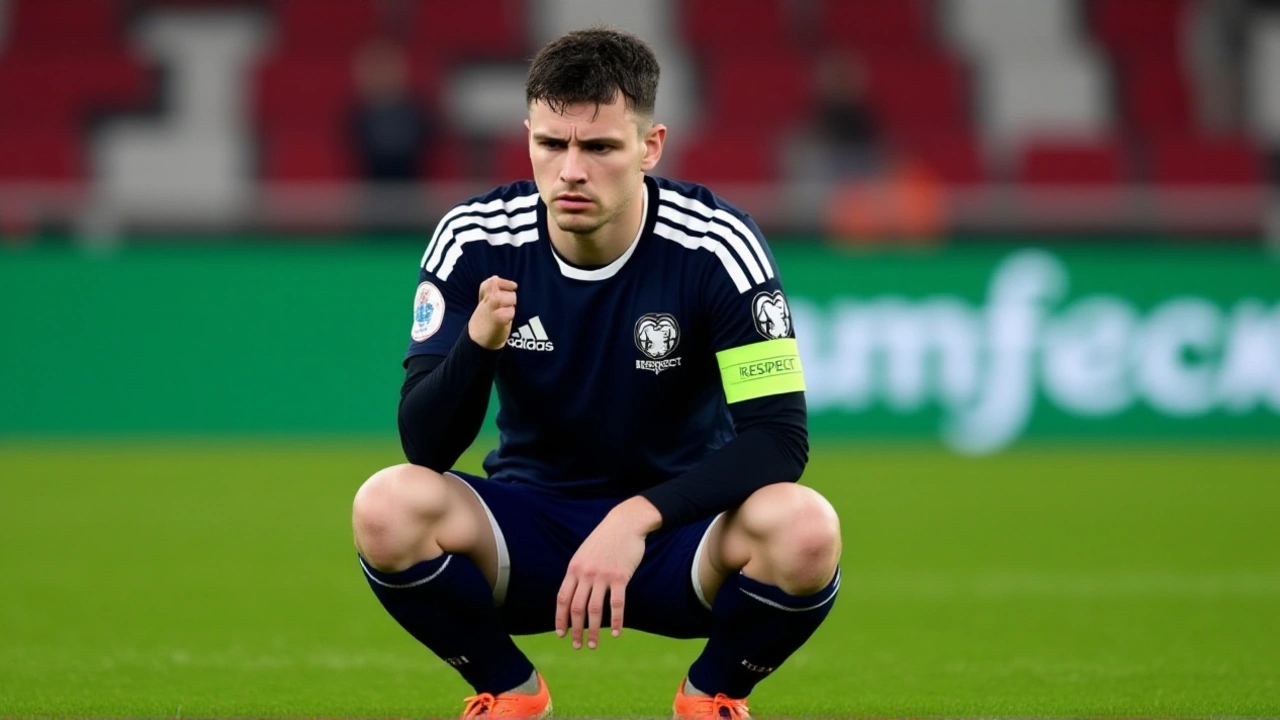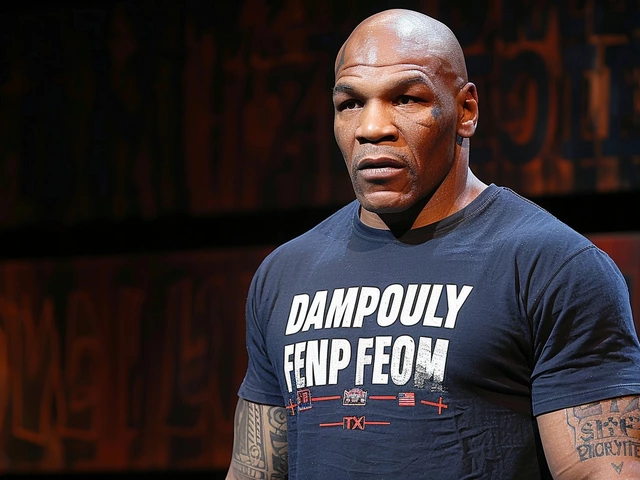When Ryan Christie fired home Scotland’s third goal in the 67th minute, the roar from Hampden Park didn’t just shake the stands—it echoed across a nation that hadn’t seen its team in a World Cup finals since 1998. On Tuesday, November 18, 2025, Scotland beat Denmark 4-2 in a match that felt more like catharsis than competition, sealing their place in the 2026 FIFA World Cup after 28 years of heartbreak. The final whistle didn’t just end a game; it closed a chapter of near-misses, near-collapses, and decades of waiting. And it happened right here, in Glasgow, under a drizzly 37°F sky, with the wind whipping in from the southeast and 50,000 voices screaming like they’d been holding their breath since the last time Scotland lifted a World Cup ticket.
A Nation That Waited Too Long
Scotland’s last World Cup appearance was France 1998—a group stage exit under Craig Brown, with one win, one draw, and one loss. Since then? Eight failed qualifiers. Eight times they came close, only to stumble in the final stretch. Eight times fans dared to hope, only to be crushed by a late goal, a controversial red card, or a missed penalty. This wasn’t just about qualifying. It was about proving that Scottish football hadn’t forgotten how to dream.
The win over Denmark wasn’t pretty, not in the way Spain’s tiki-taka is pretty. It was messy, physical, and relentless. Scottish Football Association president Ian St. John, watching from the stands, later said, “We’ve been through the dark. But tonight, the light came back.”
The Match That Broke the Curse
It started with a goal that felt destined. At the 16th minute, Christie—playing with the calm of a man who’s seen it all—slipped past Denmark’s midfield and curled a left-footed shot into the top corner. The YouTube commentary called it “a historic goal in Hampden Park that deposits it in the return to the World Cups.” By halftime, Scotland led 2-0, thanks to a headed finish from Isaac Sen after a cross from the right flank.
Denmark, group winners with 14 goals scored and just 3 conceded, responded with urgency. Rasmus Hojlund, the 22-year-old Napoli striker who’d netted four goals in qualifying, pulled one back in the 52nd minute with a thunderous strike from outside the box. But Scotland didn’t flinch. Steve Clarke, the head coach whose calm demeanor belies his tactical fire, switched to a 4-2-3-1 formation, pushing full-backs higher. The move paid off. Christie scored again in the 67th, this time off a corner, and substitute Lyndon Dykes added a third in the 78th. Denmark’s consolation goal came in stoppage time, but the damage was done.
Goalkeeper Craig Gordon, 42, didn’t keep a clean sheet—but he made three critical saves, including a diving stop on Hojlund’s second attempt. His presence wasn’t just about reflexes. It was about leadership. He’s the oldest player on the pitch, a veteran of 100+ international caps, and the man who held the team together during their darkest days.

Who Won the Group? Who Won the Moment?
Denmark finished top of Group C with 14 goals and 3 conceded, qualifying automatically. Scotland, with 9 goals scored and 5 conceded, came second. But in football, as in life, the journey matters more than the table. Denmark’s qualification was expected. Scotland’s? A miracle.
Just three days before, Scotland lost 3-2 in Athens to Greece—a result that had many writing off their chances. “We were dead,” said midfielder John McGinn after the match. “But we remembered who we are. We’re not just a team. We’re a promise kept.”
The betting odds told the story: Denmark at +123 to win, Scotland at +233. The over/under was 2.5 goals. The final score? 4-2. The under lost. The Scots won.
What This Means for Scottish Football
This isn’t just about June 2026. It’s about the kids in Dundee who’ll now believe they can play on the world stage. It’s about the coaches in grassroots academies who’ve spent years fighting for funding. It’s about the 1998 squad—those who never got to see it happen—whose names are now being whispered in the stands.
The Scottish Football Association has already announced a £15 million investment in youth development, with a focus on central Scotland. “This is the spark,” said SFA director of development Fiona MacLeod. “We’re not just building teams. We’re building belief.”
And then there’s the legacy of Hampden Park. Located at Govan Road, Glasgow, G51 2QQ, it’s not just a stadium—it’s a cathedral of hope. The “Hampden roar,” as Sky Sports called it, has been described as the loudest in European football. On Tuesday, it was the sound of a nation finally exhaling.

What’s Next?
Scotland will be placed in one of the World Cup’s eight groups when the draw takes place in December 2025. Potential opponents include the United States, Canada, and Morocco—all teams Scotland has faced in past friendlies. They’ll begin preparations in January with a training camp in Portugal, followed by a series of friendlies against South Korea and Uruguay.
For now, though, the focus is simple: celebration. The streets of Glasgow are already alive with flags, bagpipes, and the smell of fish and chips. The players have been invited to the Scottish Parliament for a special reception. And somewhere, in a living room in Inverness or a pub in Ayr, a 10-year-old is pretending to be Ryan Christie, scoring the goal that brought Scotland home.
Frequently Asked Questions
How does this affect Scottish football’s future funding and youth development?
The Scottish Football Association has pledged £15 million in new funding for grassroots programs, with priority given to central Scotland’s under-resourced academies. This includes hiring 40 new youth coaches and expanding the national talent identification network. The goal is to replicate this success by 2030, aiming for consistent World Cup appearances.
Who were the key players in Scotland’s qualifying campaign?
Ryan Christie led the attack with two crucial goals in qualifying, while John McGinn provided midfield control. Craig Gordon, at 42, was the emotional anchor, playing every minute of the final four qualifiers. Defender Scott McKenna, who scored the opening goal in the 1-0 win over Georgia, also played a vital role in stabilizing the backline.
Why did Denmark still qualify despite losing?
Denmark finished first in UEFA Group C with 17 points from six matches, winning five and drawing one. Their superior goal difference (+11) and head-to-head record over Scotland ensured top spot. The match in Glasgow was the final qualifier—Denmark had already mathematically secured their place before kickoff.
What’s the significance of Hampden Park in Scottish football history?
Hampden Park, opened in 1903, is Scotland’s national stadium and has hosted more international matches than any other venue in the UK. It’s the site of the 1967 European Cup final, where Scotland’s Lions defeated England 2-1. The “Hampden roar” became legendary during Euro 2020, and Tuesday’s crowd of 50,000 was the largest for a World Cup qualifier since 2005.
How does this compare to past Scottish World Cup campaigns?
Scotland reached the World Cup in 1974, 1978, 1982, 1986, 1990, and 1998. But only in 1974 and 1978 did they advance past the group stage. Since 1998, they’ve failed to qualify eight times in a row, often losing by a single goal in the final match. This win marks the first time since 1990 that Scotland qualified without needing a playoff.
What’s the next major milestone for Scotland’s national team?
The draw for the 2026 World Cup group stage will be held on December 7, 2025, in Las Vegas. Scotland will then begin a three-month pre-tournament camp in Portugal, followed by friendlies against South Korea and Uruguay. Their first World Cup match is expected to be in late June 2026, with venues in the U.S., Canada, and Mexico hosting the tournament.





